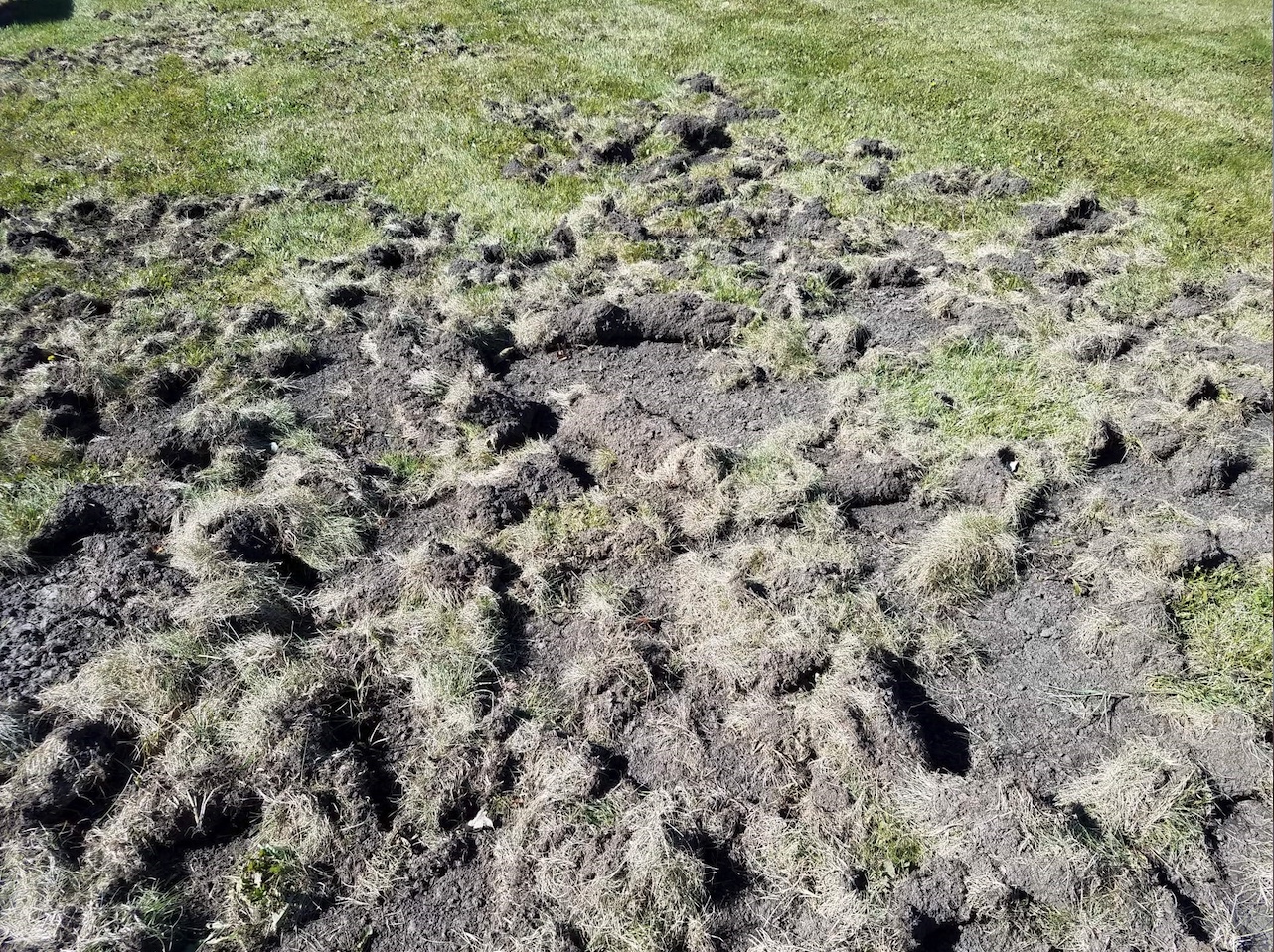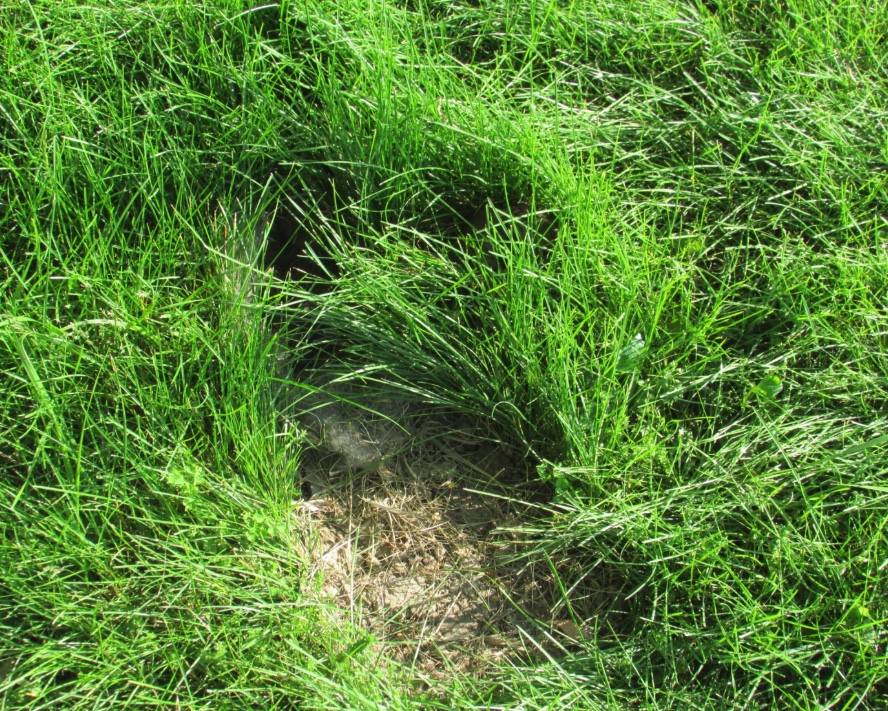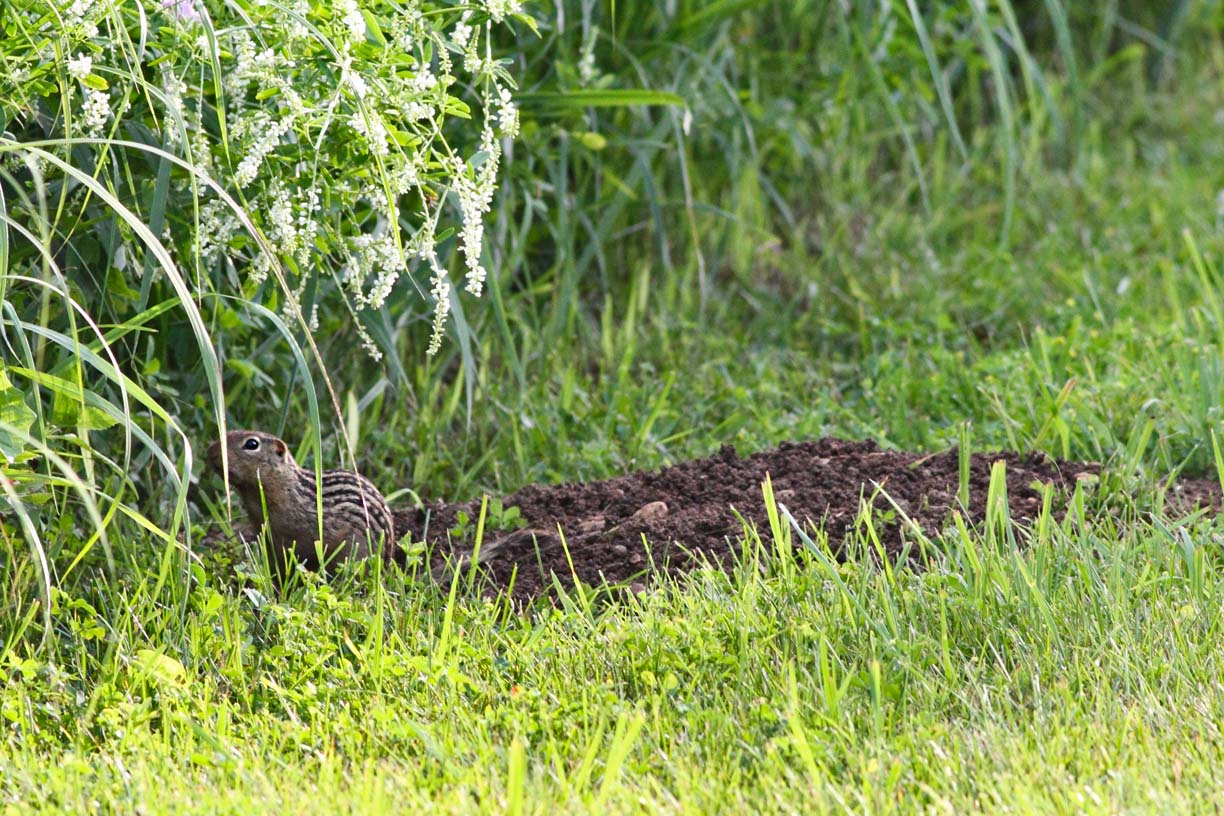Whether you prefer a carefully manicured lawn or take a laid-back approach to lawn care, it can be frustrating when wildlife dig holes in your yard. And when it comes to digging, there are quite a few potential wildlife culprits—thirteen-lined ground squirrels, woodchucks, chipmunks, skunks, raccoons, opossums, rabbits, and, in southern Illinois, armadillos. Tree squirrels will also dig small holes in yards to bury acorns and nuts.

Photo: USDA Wildlife Services
Most shallow digging is caused by animals foraging for grubs or insects under the grass. Treating the lawn for grubs can prevent or lessen future damage. In some cases there are not many holes and the small patches can be reseeded, but sometimes wildlife do extensive damage to lawns. In these cases, you may need to have new sod laid down.

Photo: Murray Crawford

Photo: Gordon Garcia
Many different animals dig burrows to raise their young in and to protect themselves from predators or weather. These burrows often have soil piled up at the entrance where the animal has excavated the soil below.
The Wildlife Illinois website was authorized by the Illinois Department of Natural Resources (IDNR) in partial fulfillment of project W-147-T. The website was developed by the National Great Rivers Research and Education Center, 2wav, and the IDNR in partnership with the United States Department of Agriculture Animal and Plant Health Inspection Service Wildlife Services and University of Illinois Extension to provide research-based information about how to coexist with Illinois wildlife.